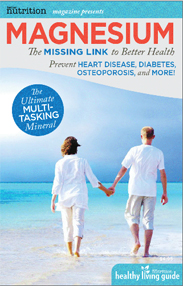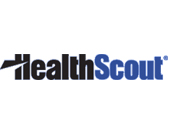Can The Heart-Healthy DASH Diet Lower Depression
It’s not a crash diet. It’s not a fad diet. It’s a complete overhaul in one’s food intake to put his or her health first: the DASH diet.
Standing for Dietary Approaches to Stop Hypertension, the DASH diet, first and foremost, prevents and lowers high blood pressure. The diet requires you to not only reduce the sodium in your diet, but also eat foods rich in nutrients (like potassium, calcium and magnesium), opt for fat-free or low-fat dairy products and limit foods high in saturday fats and sugar.
“The DASH diet has evolved over time,” says Carolyn Dean, MD, a health, diet and nutrition expert and author of The Magnesium Miracle and The Complete Natural Medicine Guide to Women’s Health. “The original DASH diet was an eating program rich in fruits and vegetables, low-fat and nonfat dairy, along with nuts, beans and seeds. However, the original DASH diet research was not designed for weight loss and was relatively high in refined grains and starchy foods. New research on the benefits of healthy fat have changed the profile of this diet.
“New DASH diet studies have helped improve the DASH diet and have shown to lower blood pressure by cutting back on the ‘empty carbs’ and adding in more protein and/or heart healthy fats,” Dean continues.
In addition to regulating what you eat, it’s also highly recommended to increase your physical activity. When you combine the DASH diet and physical activity, you have a much higher chance at not only reducing your blood pressure, but also lose weight, according to the National Heart, Lung, and Blood Institute.
There are two routes you can take with the DASH diet: the standard DASH diet or the lower-sodium DASH diet. With the standard diet, your sodium intake should be less than 2,300 mg a day. The lower-sodium diet, on the other hand, is capped at 1,500 mg a day — the recommended amount from the American Heart Association. Of course, if you aren’t sure which level is right for you, it’s advised to discuss with your doctor first.
Once you have an idea of what your sodium level should be, next is determining what you can and cannot eat while on the DASH diet, which allows for 2,000 calories per day. The breakdown is as follows:
● Grains: 6 – 8 servings a day
● Vegetables: 4 – 5 servings a day
● Fruits: 4 – 5 servings a day
● Dairy: 2 – 3 servings a day
● Lean meat, poultry and fish: 6 or less servings a day
● Nuts, seeds and legumes: 4 – 5 servings a week
● Fats and oils: 2 – 3 servings a day
● Sweets: 5 or less servings a week
This is certainly a lot to take in at once, but Mayo Clinic has a very detailed and helpful DASH diet food intake guide. One thing to keep in mind, though, is this diet is all about cutting down sodium. So when in doubt, opt for foods that are naturally low in sodium.
“Read food labels,” suggests Becky Kerkenbush, a clinical dietitian and member of the Wisconsin Academy of Nutrition & Dietetics. “Aim for items that are less than 140 mg sodium per serving. Items that are more than 300 mg sodium per serving may not fit into a low-sodium diet.”
“Sodium is a culprit in sodium-sensitive blood pressure reactions, whereby a person may have normal blood pressure (130/70), but after a high-sodium meal (soy sauces, fast food, canned food, added salt), their BP can spike to 180/101,” adds Dr. M Daniela Torchia, a registered dietitian with over 21 years of experience. “Sodium affects hydration and kidney function, and the kidneys are partly responsible for the contraction and relaxation of arteries. When there is a sodium imbalance, or an excess, the blood pressure can increase.”
According to Mayo Clinic, you could reduce your blood pressure by a few points in just two weeks of following the DASH diet. “Over time, your systolic blood pressure could drop by eight to 14 points, which can make a significant difference in your health risks,” the website states.
Lowering one’s blood pressure and improving one’s heart health aren’t the only benefits of the DASH diet, though. In addition to preventing osteoporosis, cancer, heart disease, stroke and diabetes, the DASH diet has also been linked to fighting depression.
“Depression is common in older adults and more frequent in people with memory problems, vascular risk factors such as high blood pressure or high cholesterol, or people who have had a stroke,” study author Laurel Cherian, MD, of Rush University Medical Center in Chicago, tells CBS News. “Making a lifestyle change such as changing your diet is often preferred over taking medications, so we wanted to see if diet could be an effective way to reduce the risk of depression.”
According to results from a study conducted by the American Academy of Neurology, people who followed the DASH diet most closely were less likely to develop depression than people who followed the Western diet.
Laurie Endicott Thomas, author of Thin Diabetes, Fat Diabetes, says it’s this Western diet that creates a shortage of tryptophan in the brain.
“When people eat the standard American diet, they eat huge amounts of animal protein,” Thomas says. “As a result, they get an overload of the large neutral amino acids, which compete with the essential amino acid tryptophan for transport into the brain. So even if you are eating a lot of tryptophan, the overload of those other amino acids could mean that you have a shortage of tryptophan in the brain. Your brain cells need tryptophan in order to make serotonin. Many antidepressants work by increasing the action of serotonin in the brain.”
In addition, researchers believe it’s the vitamins and nutrients found in healthy foods that affect one’s mood and could affect the likelihood of depression. Dean agrees.
“The portion of the DASH diet that can actually lower depression is the magnesium contained in dark leafy green vegetables and nuts and seeds such as almonds and pumpkin seeds,” she says. “The reason for this is that serotonin, the feel-good brain chemical that is boosted artificially by some medications, depends on magnesium for its production and function. That is why magnesium is known as the anti-stress, anti-depression mineral.”
Thomas adds that because DASH also helps improve circulation, it could also be a factor in helping people feel good.
“The diet is designed to decrease the amount of resistance in the circulatory system,” she says. “As a result, the blood will circulate better, and the heart will not have to pump as hard. As a result, the blood pressure drops to normal levels. This improved circulation can also make you feel better, in general.”
Do keep in mind, though, that it’s not confirmed the DASH diet prevents depression. But if you have high blood pressure, the diet may be for you. Again, always check with your doctor before starting any diet.
“DASH diet is one component of a heart-healthy lifestyle,” says Kerkenbush. “Other factors include not smoking, stress management, physical activity, limiting alcohol intake, getting adequate sleep and maintaining a healthy weight.”
Kristine Cannon
Newsletter
![]()

Want valuable information regarding the health benefits of magnesium, latest studies, expert interviews,videos and health tips? Enter your name and email address and you can start receiving valuable health information right away.
Featured On:








